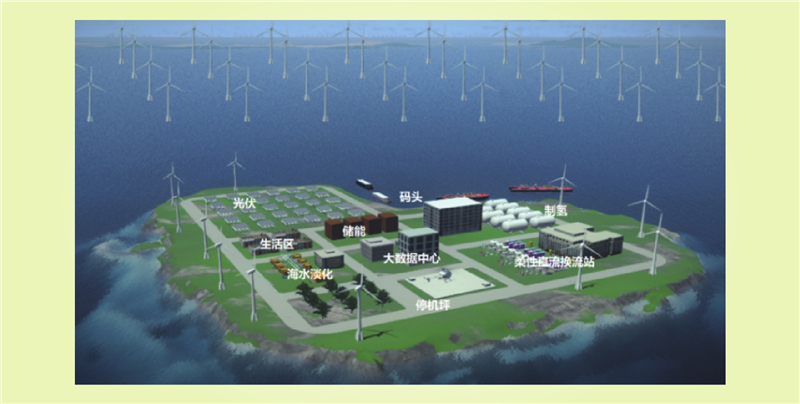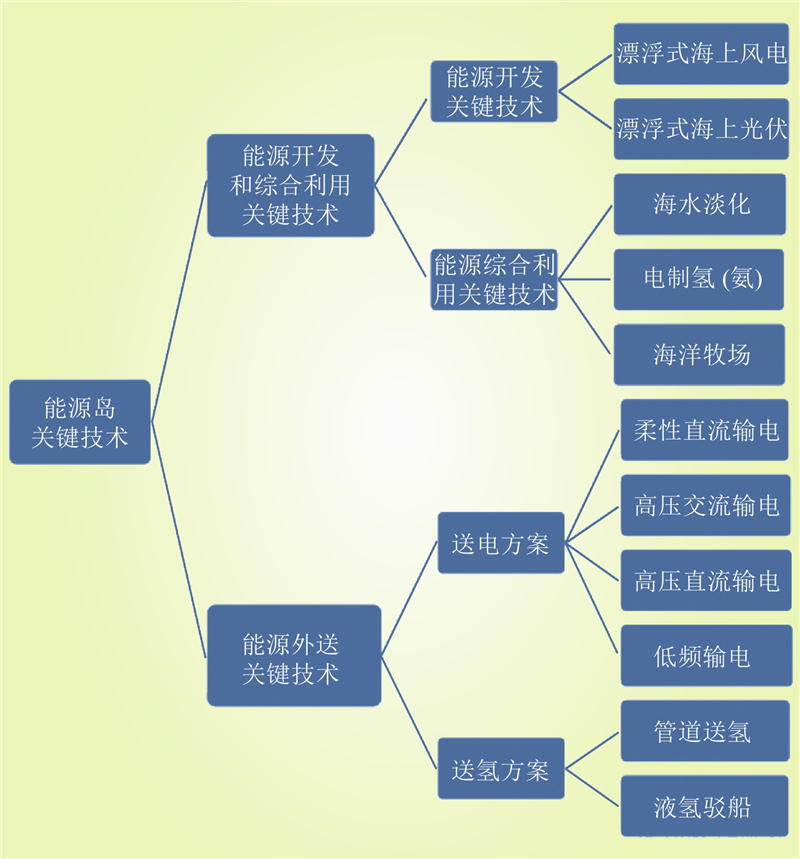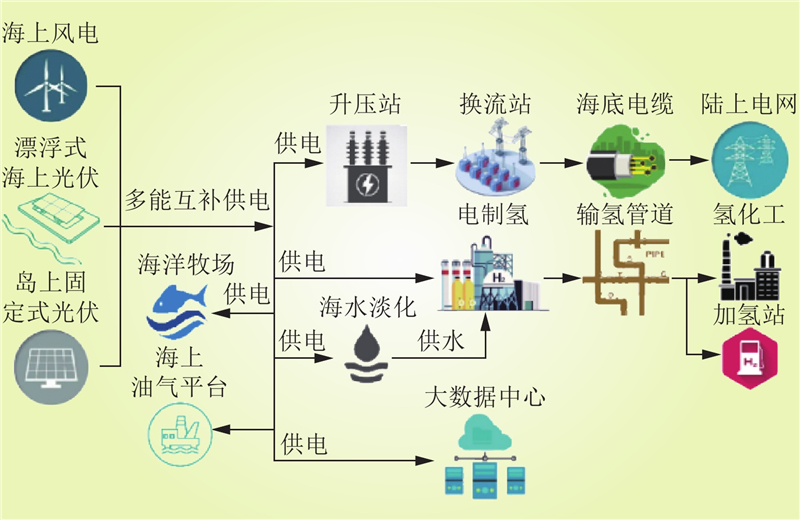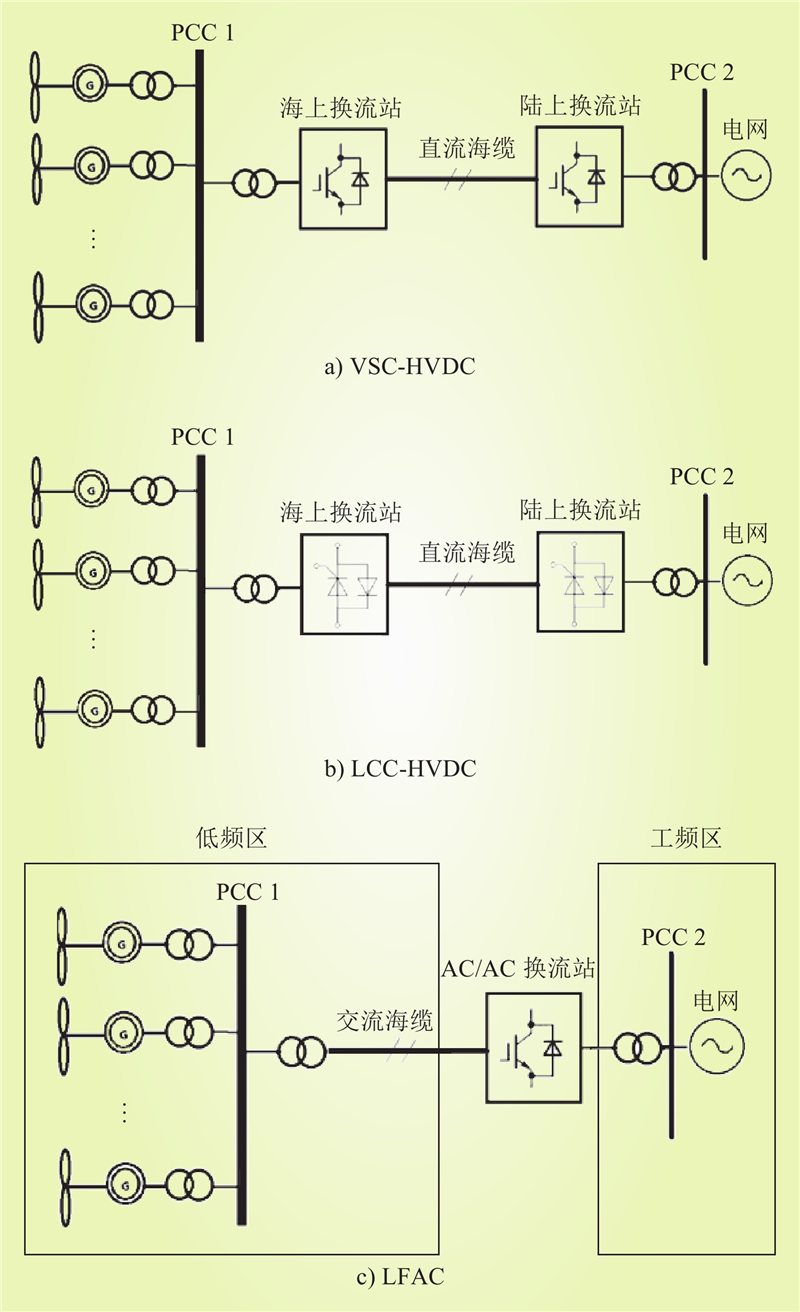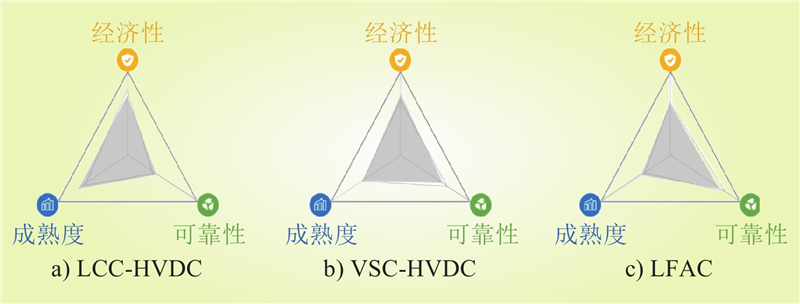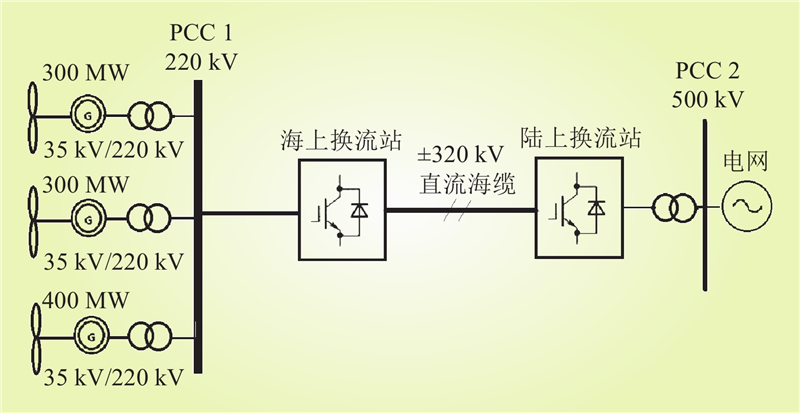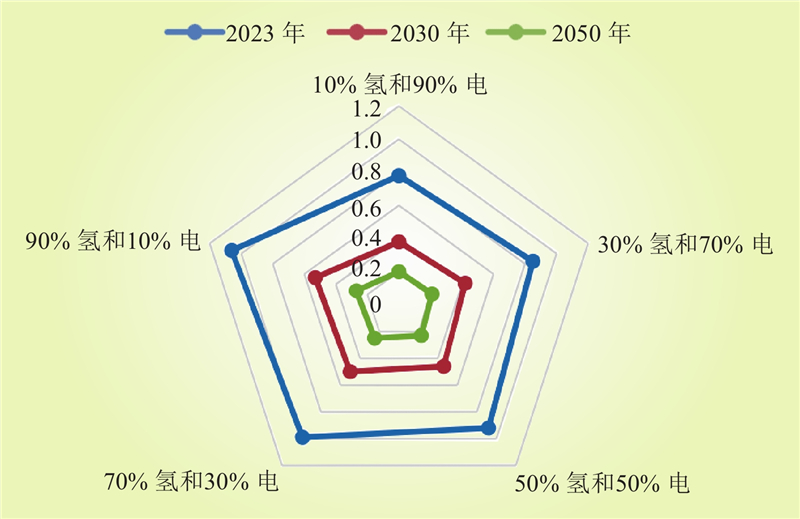| 1 |
黄明煌, 王秀丽, 刘沈全, 等. 分频输电应用于深远海风电并网的技术经济性分析[J]. 电力系统自动化, 2019, 43 (5): 167- 174.
|
|
HUANG Minghuang, WANG Xiuli, LIU Shenquan, et al. Technical and economic analysis on fractional frequency transmission system for integration of long-distance offshore wind farm[J]. Automation of Electric Power Systems, 2019, 43 (5): 167- 174.
|
| 2 |
全球能源互联网发展合作组织. 中国清洁能源基地化开发研究[M]. 北京: 中国电力出版社, 2023.
|
| 3 |
李俊贤, 吴敏辉, 周于雷. 深远海风电运维技术与模式研究[J]. 水电与新能源, 2023, 37 (12): 43- 46.
|
|
LI Junxian, WU Minhui, ZHOU Yulei. On the operation and maintenance technology and modes of far-shore wind power projects[J]. Hydropower and New Energy, 2023, 37 (12): 43- 46.
|
| 4 |
刘佳明. 大型海上风机的半潜式浮动基础结构设计与性能分析[D]. 哈尔滨: 哈尔滨工业大学, 2014.
|
|
LIU Jiaming. Preliminary design and performance analysis of a semi-submersible floating foundation for large offshore wind trubine[D]. Harbin: Harbin Institute of Technology, 2014.
|
| 5 |
周原冰. 全球能源互联网及关键技术[J]. 科学通报, 2019, 64 (19): 1985- 1994.
DOI
|
|
ZHOU Yuanbing. Global energy interconnection vision and key technologies[J]. Chinese Science Bulletin, 2019, 64 (19): 1985- 1994.
DOI
|
| 6 |
PRYOR S C, BARTHELMIE R J. Wind shadows impact planning of large offshore wind farms[J]. Applied Energy, 2024, 359, 122755.
DOI
|
| 7 |
陈金路, 张翔宇, 郑向远, 等. 海上风电智能运维关键技术与发展建议[J]. 海洋开发与管理, 2023, 40 (6): 117- 128.
|
|
CHEN Jinlu, ZHANG Xiangyu, ZHENG Xiangyuan, et al. Key technologies and development suggestions for intelligent operation and maintenance of offshore wind power[J]. Ocean Development and Management, 2023, 40 (6): 117- 128.
|
| 8 |
贾科, 董学正, 李俊涛, 等. 一种适用于海上风电经MMC-MTDC并网的电网侧故障穿越方法[J]. 电力系统保护与控制, 2023, 51 (21): 76- 85.
|
|
JIA Ke, DONG Xuezheng, LI Juntao, et al. A grid-side fault ride-through method suitable for offshore wind farms connected with MMC-MTDC[J]. Power System Protection and Control, 2023, 51 (21): 76- 85.
|
| 9 |
SHAO H, HENRIQUES R, MORAIS H, et al. Power quality monitoring in electric grid integrating offshore wind energy: a review[J]. Renewable and Sustainable Energy Reviews, 2024, 191, 114094.
DOI
|
| 10 |
KALLINGER M D, RAPHA J I, TRUBAT CASAL P, et al. Offshore electrical grid layout optimization for floating wind—a review[J]. Clean Technologies, 2023, 5 (3): 791- 827.
DOI
|
| 11 |
李海波. 深远海海上风电制氨场景及技术分析[J]. 低碳化学与化工, 2024, 49 (2): 115- 123.
|
|
LI Haibo. Analysis of scenarios and technologies for offshore wind power ammonia production in deep-sea[J]. Low-Carbon Chemistry and Chemical Engineering, 2024, 49 (2): 115- 123.
|
| 12 |
李霄飞, 吴凤洁, 李鲁, 等. 海上风电产业发展判析[J]. 中国电力企业管理, 2023, (18): 14- 17.
DOI
|
| 13 |
王婷, 茹小尚, 张立斌. 海上风电对海洋生态环境与海洋生物资源的综合影响研究进展[J]. 海洋科学, 2022, 46 (7): 95- 104.
|
|
WANG Ting, RU Xiaoshang, ZHANG Libin. Research progress on the comprehensive impact of offshore wind farms on the marine ecological environment and biological resources[J]. Marine Sciences, 2022, 46 (7): 95- 104.
|
| 14 |
GIMPEL A, WERNER K M, BOCKELMANN F D, et al. Ecological effects of offshore wind farms on Atlantic cod (Gadus morhua) in the southern North Sea[J]. Science of the Total Environment, 2023, 878, 162902.
DOI
|
| 15 |
胡剑. 海上风电项目对海洋生态环境的影响及防治措施[J]. 科技创新与应用, 2016, (34): 147.
|
| 16 |
沈钦韩. 比利时将建世界首个人工“能源岛”[N]. 文汇报, 2023-11-04(004).
|
| 17 |
宪凯. 海上风电制氢产业发展研究[J]. 中国资源综合利用, 2023, 41 (9): 166- 168.
DOI
|
|
XIAN Kai. Research on the development of offshore wind power hydrogen production industry[J]. China Resources Comprehensive Utilization, 2023, 41 (9): 166- 168.
DOI
|
| 18 |
孙腾, 龚语嫣, 冯翠翠, 等. 海上风牧融合的难题与挑战[J]. 海洋开发与管理, 2023, 40 (9): 19- 29.
|
|
SUN Teng, GONG Yuyan, FENG Cuicui, et al. Difficulties and challenges of the integration of offshore wind farms and marine ranching[J]. Ocean Development and Management, 2023, 40 (9): 19- 29.
|
| 19 |
余立志. 深远海漂浮式风电项目施工技术论证与实践[M]. 北京: 人民交通出版社, 2023.
|
| 20 |
秦海岩. 推动深远海风电开发, 助力沿海地区高质量发展[J]. 风能, 2024, (2): 1.
|
| 21 |
王锡凡, 卫晓辉, 宁联辉, 等. 海上风电并网与输送方案比较[J]. 中国电机工程学报, 2014, 34 (31): 5459- 5466.
|
|
WANG Xifan, WEI Xiaohui, NING Lianhui, et al. Integration techniques and transmission schemes for off-shore wind farms[J]. Proceedings of the CSEE, 2014, 34 (31): 5459- 5466.
|
| 22 |
徐政, 薛英林, 张哲任. 大容量架空线柔性直流输电关键技术及前景展望[J]. 中国电机工程学报, 2014, 34 (29): 5051- 5062.
|
|
XU Zheng, XUE Yinglin, ZHANG Zheren. VSC-HVDC technology suitable for bulk power overhead line transmission[J]. Proceedings of the CSEE, 2014, 34 (29): 5051- 5062.
|
| 23 |
刘钟淇, 宋强, 刘文华. 基于模块化多电平变流器的轻型直流输电系统[J]. 电力系统自动化, 2010, 34 (2): 53- 58.
|
|
LIU Zhongqi, SONG Qiang, LIU Wenhua. VSC-HVDC system based on modular multilevel converters[J]. Automation of Electric Power Systems, 2010, 34 (2): 53- 58.
|
| 24 |
饶宏, 周月宾, 李巍巍, 等. 柔性直流输电技术的工程应用和发展展望[J]. 电力系统自动化, 2023, 47 (1): 1- 11.
|
|
RAO Hong, ZHOU Yuebin, LI Weiwei, et al. Engineering application and development prospect of VSC-HVDC transmission technology[J]. Automation of Electric Power Systems, 2023, 47 (1): 1- 11.
|
| 25 |
SULTAN Y A, KADDAH S S, ELADL A A. VSC-HVDC system-based on model predictive control integrated with offshore wind farms[J]. IET Renewable Power Generation, 2021, 15 (6): 1315- 1330.
DOI
|
| 26 |
徐政. 海上风电送出主要方案及其关键技术问题[J]. 电力系统自动化, 2022, 46 (21): 1- 10.
DOI
|
|
XU Zheng. Main schemes and key technical problems for grid integration of offshore wind farm[J]. Automation of Electric Power Systems, 2022, 46 (21): 1- 10.
DOI
|
| 27 |
王锡凡, 刘沈全, 宋卓彦, 等. 分频海上风电系统的技术经济分析[J]. 电力系统自动化, 2015, 39 (3): 43- 50.
DOI
|
|
WANG Xifan, LIU Shenquan, SONG Zhuoyan, et al. Technical and economical analysis on offshore wind power system integrated via fractional frequency transmission system[J]. Automation of Electric Power Systems, 2015, 39 (3): 43- 50.
DOI
|
| 28 |
黄晓尧, 谢瑞, 裘鹏, 等. 远海风电两种送出方案的经济性评估[J]. 浙江电力, 2022, 41 (7): 1- 7.
|
|
HUANG Xiaoyao, XIE Rui, QIU Peng, et al. Economic evaluation of two transmission methods for long-distance offshore wind power[J]. Zhejiang Electric Power, 2022, 41 (7): 1- 7.
|
| 29 |
DNV. Floating offshore wind: the next five years[EB/OL]. (2022-01-01)[2023-12-01]. https://www.dnv.com/focus-areas/floating-offshore-wind/floating-offshore-wind-the-next-five-years/.
|
| 30 |
Frazer-Nash Consultancy. Review of technical assumptions and generation costs: floating offshore wind levelised cost of energy review[EB/OL]. (2023-01-01)[2023-11-30]. https://assets.publishing.service.gov.uk/media/655371f7019bd600149f1ffa/floating-offshore-wind-lcoe-report.pdf.
|
| 31 |
全球能源互联网发展合作组织. 绿氢发展与展望[M]. 北京: 中国电力出版社, 2022.
|


